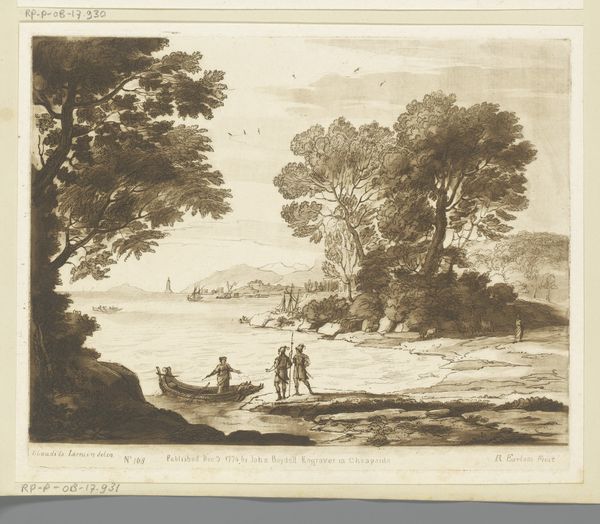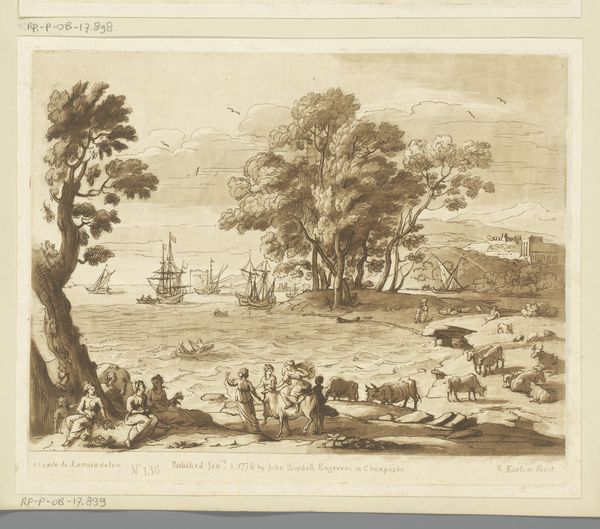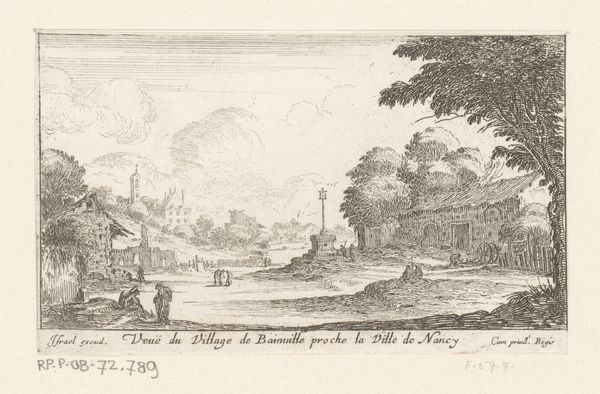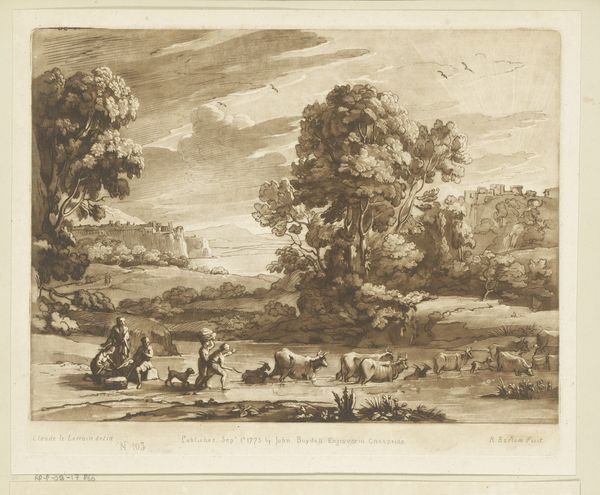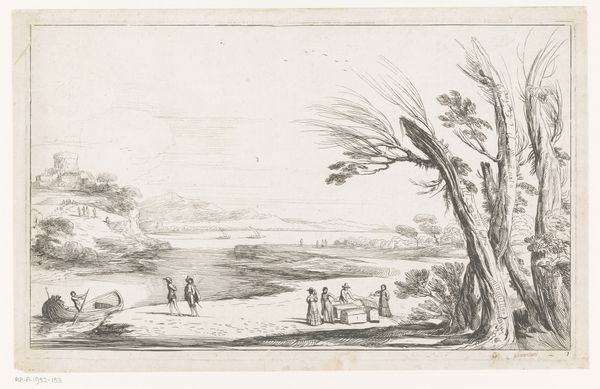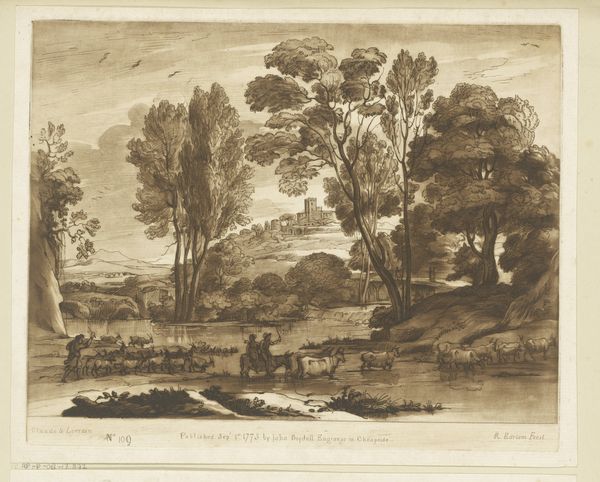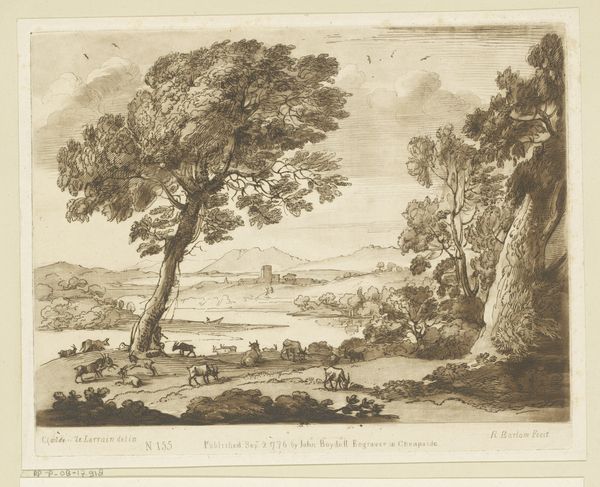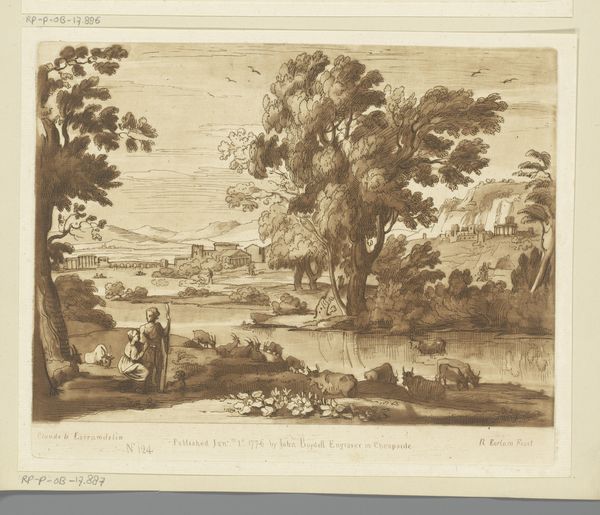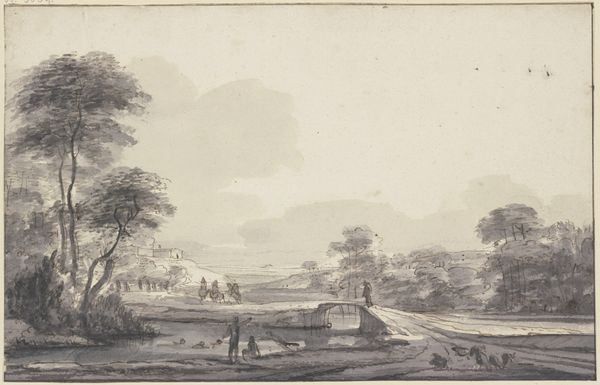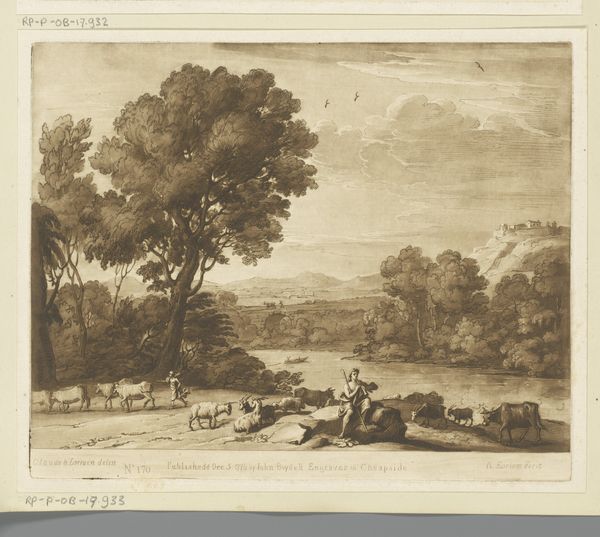
print, engraving
#
baroque
#
dutch-golden-age
# print
#
landscape
#
figuration
#
genre-painting
#
engraving
Dimensions: height 111 mm, width 207 mm
Copyright: Rijks Museum: Open Domain
Curator: Welcome to the Rijksmuseum. We're standing before "Landscape with Farmhouse and Resting Figures," an engraving by François Collignon, dating back to about 1643. Editor: It’s remarkably sparse. The etching emphasizes the stark openness of the landscape, focusing on the relationships between people, the materials that enclose them and that they interact with: the land and the structures they raise. Curator: I notice immediately the distinct grouping of figures and animals in the composition. At the forefront, you see resting figures, balanced against the activity around the farmhouse further back. It suggests an interesting commentary on leisure versus labor. Editor: Definitely. And consider how printmaking functioned within the artistic ecosystem of the Dutch Golden Age. These engravings were crucial in disseminating artistic styles, functioning almost as an early form of art market and cultural currency for these bucolic scenes. Curator: Absolutely, they become a conduit. The resting figures themselves evoke the pastoral tradition, reflecting an idealized view of rural life that was extremely popular among urban patrons at the time, suggesting harmony. What do you think they represent? Editor: They could be read as symbolic figures: perhaps alluding to themes of simplicity, connection to the land, or even serving as allegorical representations of human nature at rest. But again, note the choice of medium – engraving – making the picturesque attainable as a manufactured ideal in Dutch society. Curator: Yes, the material is significant here, mediating our understanding. And, interestingly, the engraving medium allows for fine details. See the textural differences in the thatched roof, or the soft shadows around the resting figures and consider the artistic labour expended! Editor: It draws us in. A study of form, work, representation and symbol systems combining and working within their contexts... I’d say viewing Collignon’s landscape provides insight into the desires, the aspirations and the production strategies prevalent at the time it was created. Curator: I agree completely. Considering the iconography along with production, one gets a multifaceted vision of a culture grappling with newfound economic and social structures. Editor: A compelling, accessible look, I might add. Curator: Precisely, it's remarkable how the cultural, material, and symbolic aspects intertwine in this small, but expansive landscape.
Comments
No comments
Be the first to comment and join the conversation on the ultimate creative platform.

